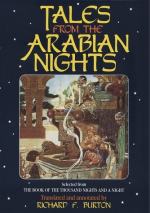Baron Silvestre de Sacy[FN#159]—clarum et venerabile nomen—is the chief authority for the Arab provenance of The Nights. Apparently founding his observations upon Galland,[FN#160] he is of opinion that the work, as now known, was originally composed in Syria[FN#161] and written in the vulgar dialect; that it was never completed by the author, whether he was prevented by death or by other cause; and that imitators endeavoured to finish the work by inserting romances which were already known but which formed no part of the original recueil, such as the Travels of Sindbad the Seaman, the Book of the Seven Wazirs and others. He accepts the Persian scheme and cadre of the work, but no more. He contends that no considerable body of prae-Mohammedan or non-Arabic fiction appears in the actual texts[FN#162]; and that all the tales, even those dealing with events localised in Persia, India, China and other infidel lands and dated from ante-islamitic ages mostly with the naivest anachronism, confine themselves to depicting the people, manners and customs of Baghdad and Mosul, Damascus and Cairo, during the Abbaside epoch, and he makes a point of the whole being impregnated with the strongest and most zealous spirit of Mohammedanism. He points out that the language is the popular or vulgar dialect, differing widely from the classical and literary; that it contains many words in common modern use and that generally it suggests the decadence of Arabian literature. Of one tale he remarks:—The History of the loves of Camaralzaman and Budour, Princess




